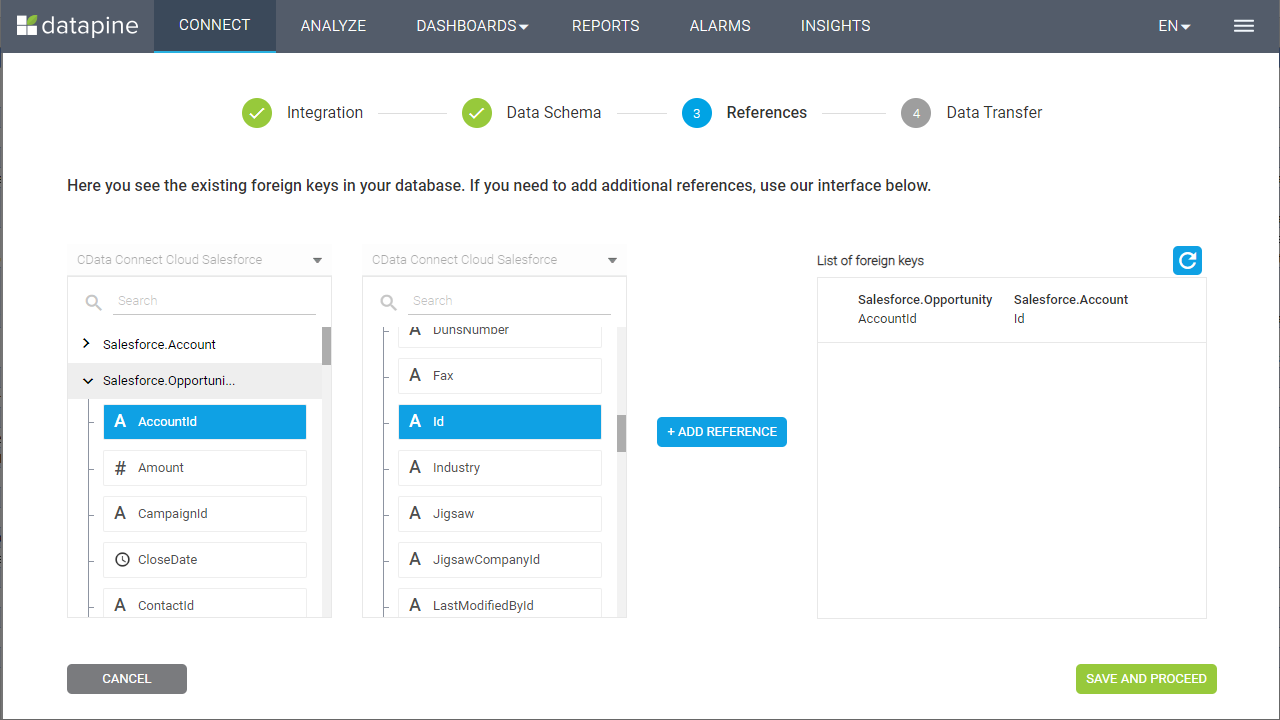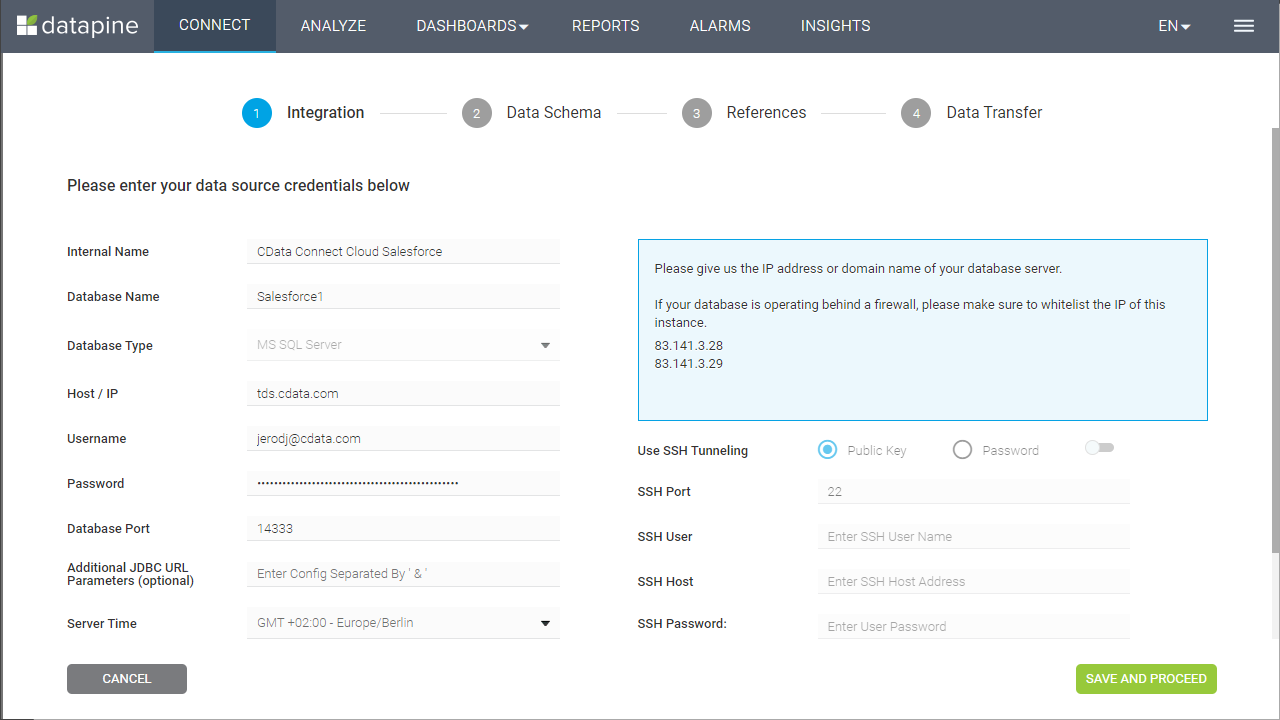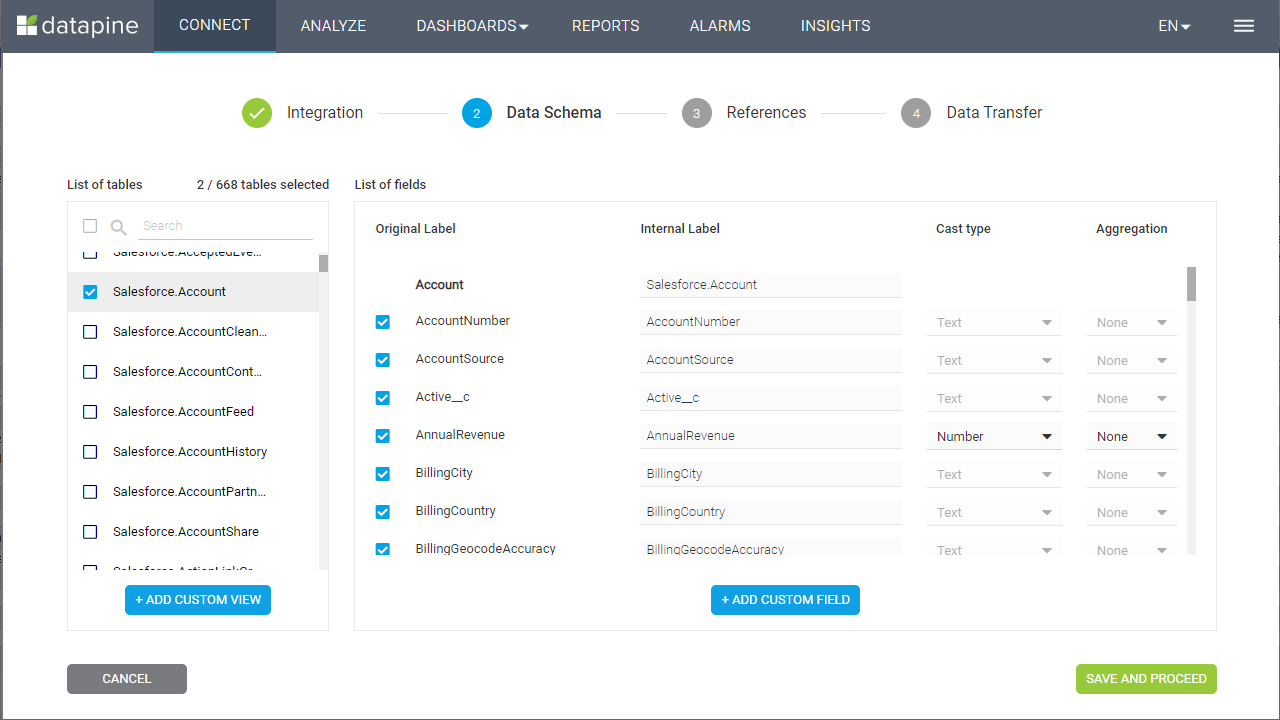Discover how a bimodal integration strategy can address the major data management challenges facing your organization today.
Get the Report →Build SingleStore-Connected Visualizations in datapine
Use CData Connect Cloud and datapine to build visualizations and dashboards with access to live SingleStore data.
datapine is a browser-based business intelligence platform. When paired with the CData Connect Cloud, you get access to your SingleStore data directly from your datapine visualizations and dashboards. This article describes connecting to SingleStore in CData Connect Cloud and building a simple SingleStore-connected visualization in datapine.
CData Connect Cloud provides a pure SQL Server interface for SingleStore, allowing you to query data from SingleStore without replicating the data to a natively supported database. Using optimized data processing out of the box, CData Connect Cloud pushes all supported SQL operations (filters, JOINs, etc.) directly to SingleStore, leveraging server-side processing to return the requested SingleStore data quickly.
Configure SingleStore Connectivity for datapine
Connectivity to SingleStore from datapine is made possible through CData Connect Cloud. To work with SingleStore data from datapine, we start by creating and configuring a SingleStore connection.
- Log into Connect Cloud, click Connections and click Add Connection
- Select "SingleStore" from the Add Connection panel
-
Enter the necessary authentication properties to connect to SingleStore.
The following connection properties are required in order to connect to data.
- Server: The host name or IP of the server hosting the SingleStore database.
- Port: The port of the server hosting the SingleStore database.
- Database (Optional): The default database to connect to when connecting to the SingleStore Server. If this is not set, tables from all databases will be returned.
Connect Using Standard Authentication
To authenticate using standard authentication, set the following:
- User: The user which will be used to authenticate with the SingleStore server.
- Password: The password which will be used to authenticate with the SingleStore server.
Connect Using Integrated Security
As an alternative to providing the standard username and password, you can set IntegratedSecurity to True to authenticate trusted users to the server via Windows Authentication.
Connect Using SSL Authentication
You can leverage SSL authentication to connect to SingleStore data via a secure session. Configure the following connection properties to connect to data:
- SSLClientCert: Set this to the name of the certificate store for the client certificate. Used in the case of 2-way SSL, where truststore and keystore are kept on both the client and server machines.
- SSLClientCertPassword: If a client certificate store is password-protected, set this value to the store's password.
- SSLClientCertSubject: The subject of the TLS/SSL client certificate. Used to locate the certificate in the store.
- SSLClientCertType: The certificate type of the client store.
- SSLServerCert: The certificate to be accepted from the server.
Connect Using SSH Authentication
Using SSH, you can securely login to a remote machine. To access SingleStore data via SSH, configure the following connection properties:
- SSHClientCert: Set this to the name of the certificate store for the client certificate.
- SSHClientCertPassword: If a client certificate store is password-protected, set this value to the store's password.
- SSHClientCertSubject: The subject of the TLS/SSL client certificate. Used to locate the certificate in the store.
- SSHClientCertType: The certificate type of the client store.
- SSHPassword: The password that you use to authenticate with the SSH server.
- SSHPort: The port used for SSH operations.
- SSHServer: The SSH authentication server you are trying to authenticate against.
- SSHServerFingerPrint: The SSH Server fingerprint used for verification of the host you are connecting to.
- SSHUser: Set this to the username that you use to authenticate with the SSH server.
![Configuring a connection (Salesforce is shown)]()
- Click Create & Test
-
Navigate to the Permissions tab in the Add SingleStore Connection page and update the User-based permissions.
![Updating permissions]()


Add a Personal Access Token
If you are connecting from a service, application, platform, or framework that does not support OAuth authentication, you can create a Personal Access Token (PAT) to use for authentication. Best practices would dictate that you create a separate PAT for each service, to maintain granularity of access.
- Click on your username at the top right of the Connect Cloud app and click User Profile.
- On the User Profile page, scroll down to the Personal Access Tokens section and click Create PAT.
- Give your PAT a name and click Create.
- The personal access token is only visible at creation, so be sure to copy it and store it securely for future use.

Connecting to SingleStore from datapine
Once you configure your connection to SingleStore in Connect Cloud, you are ready to connect to SingleStore from datapine.
- Log into datapine
- Click Connect to navigate to the "Connect" page
- Select MS SQL Server as the data source
- In the Integration step, fill in the connection properties and click "Save and Proceed"
- Set the Internal Name
- Set Database Name to the name of the connection we just configured (e.g. SingleStore1)
- Set Host / IP to "tds.cdata.com"
- Set Username to your Connect Cloud username (e.g. [email protected])
- Set Password to the corresponding PAT
- Set Database Port to "14333"
![Configuring the connection to CData Connect Cloud]()
- In the Data Schema step, select the tables and fields to visualize and click "Save and Proceed"
![Selecting tables and fields to visualize (Salesforce is shown)]()
- In the References step, define any relationships between your selected tables and click "Save and Proceed"
![Defining foreign key relationships]()
- In the Data Transfer step, click "Go to Analyzer"
Visualize SingleStore Data in datapine
After connecting to CData Connect Cloud, you are ready to visualize your SingleStore data in datapine. Simply select the dimensions and measures you wish to visualize!

Having connect to SingleStore from datapine, you are now able to visualize and analyze real-time SingleStore data no matter where you are. To get live data access to 100+ SaaS, Big Data, and NoSQL sources directly from datapine, try CData Connect Cloud today!










